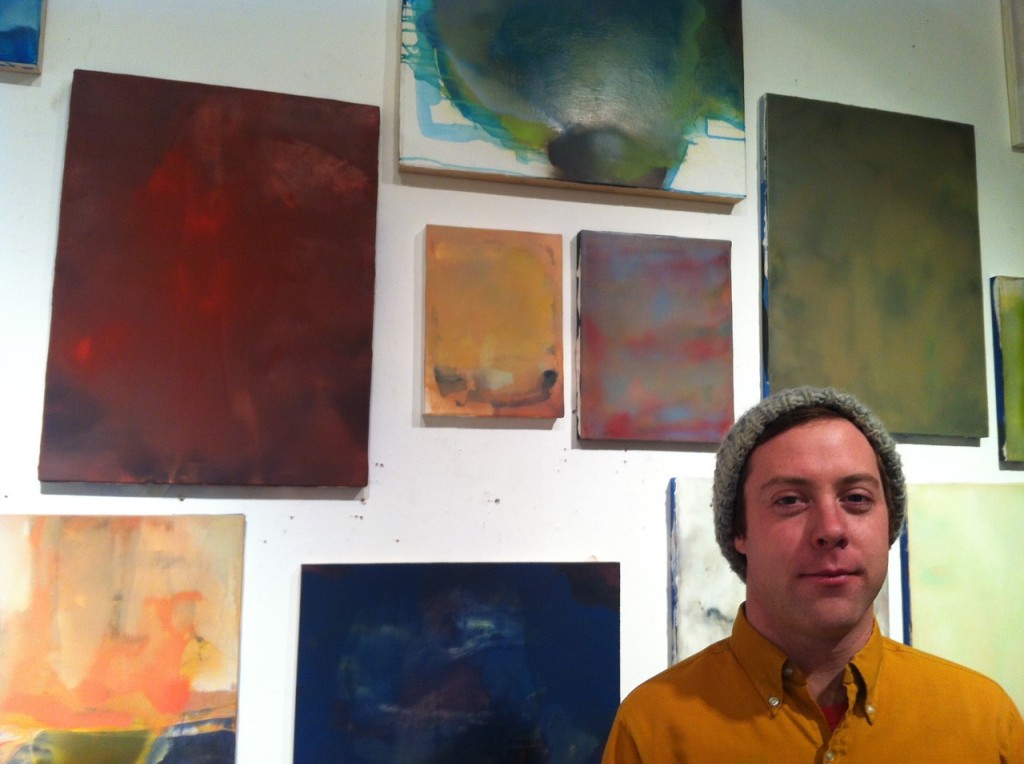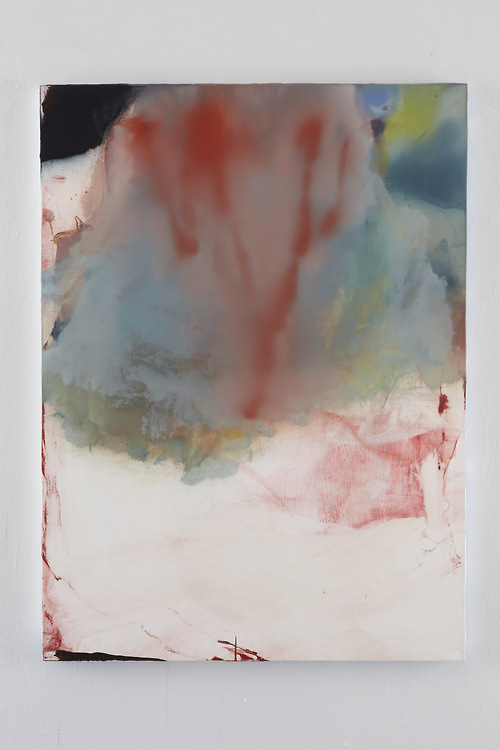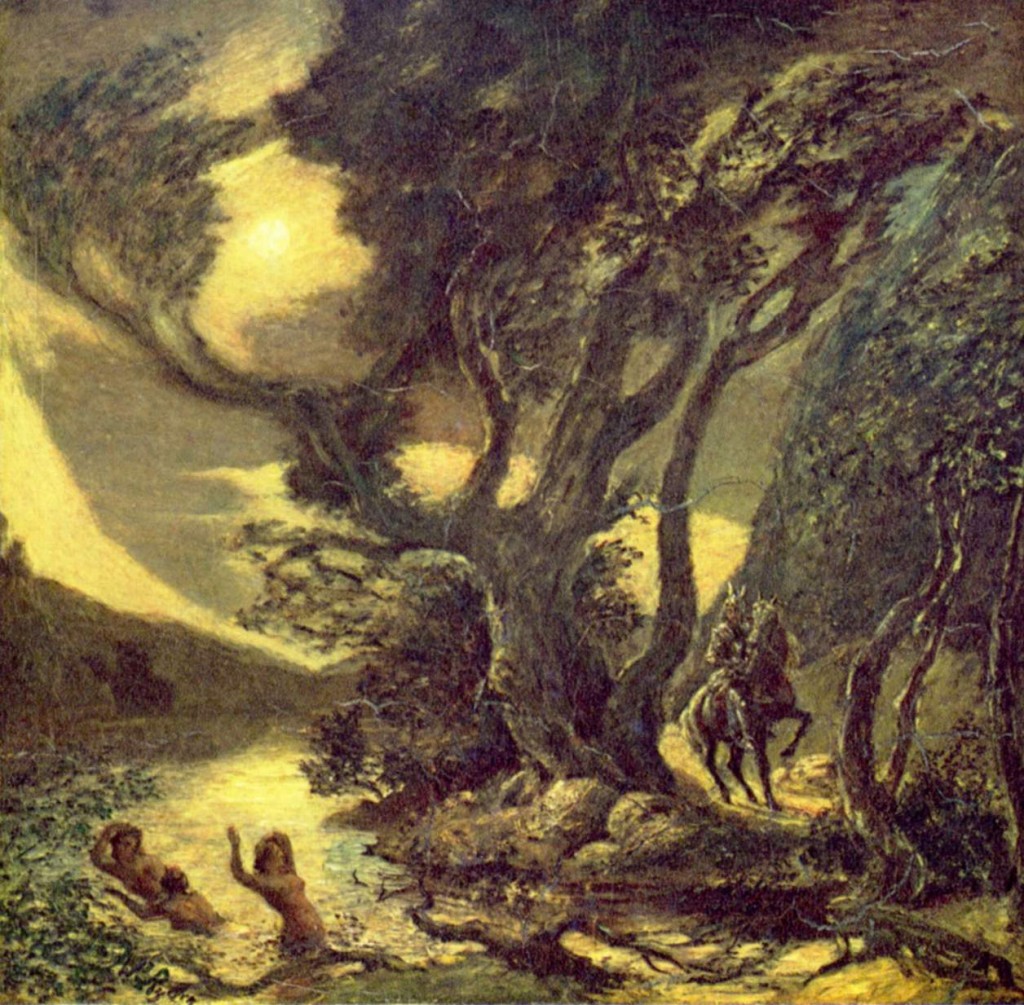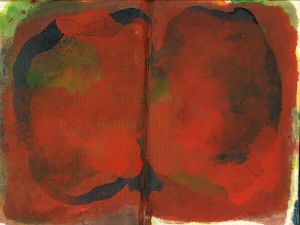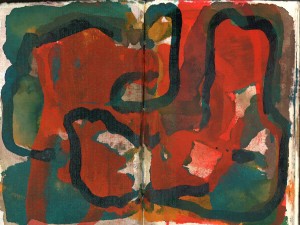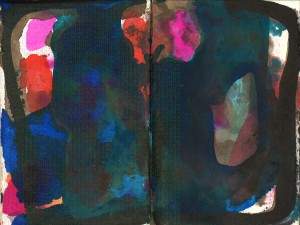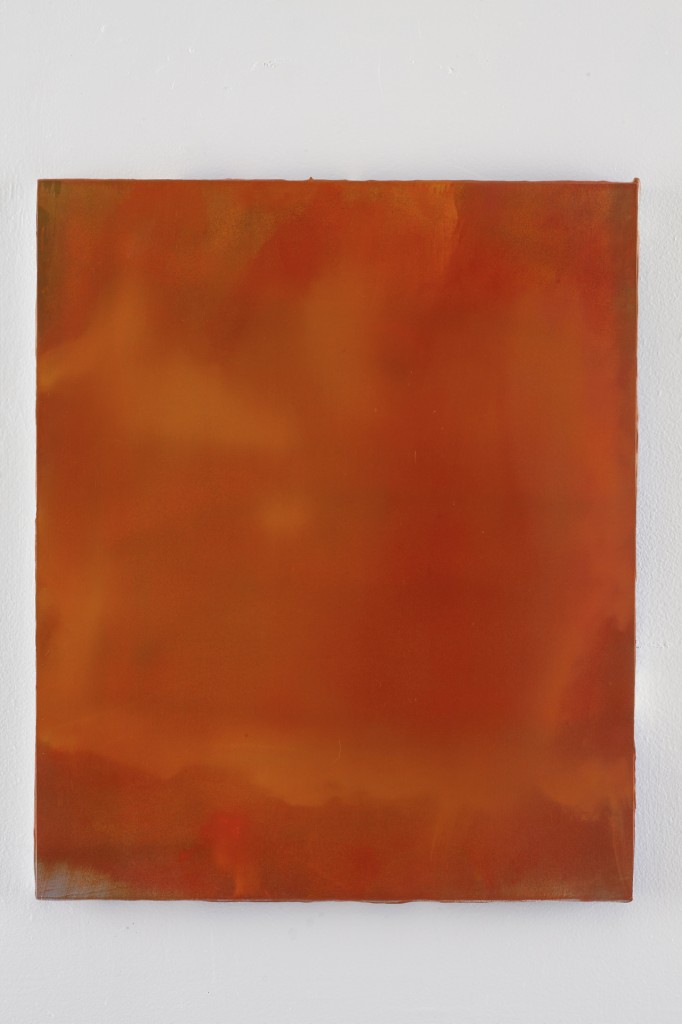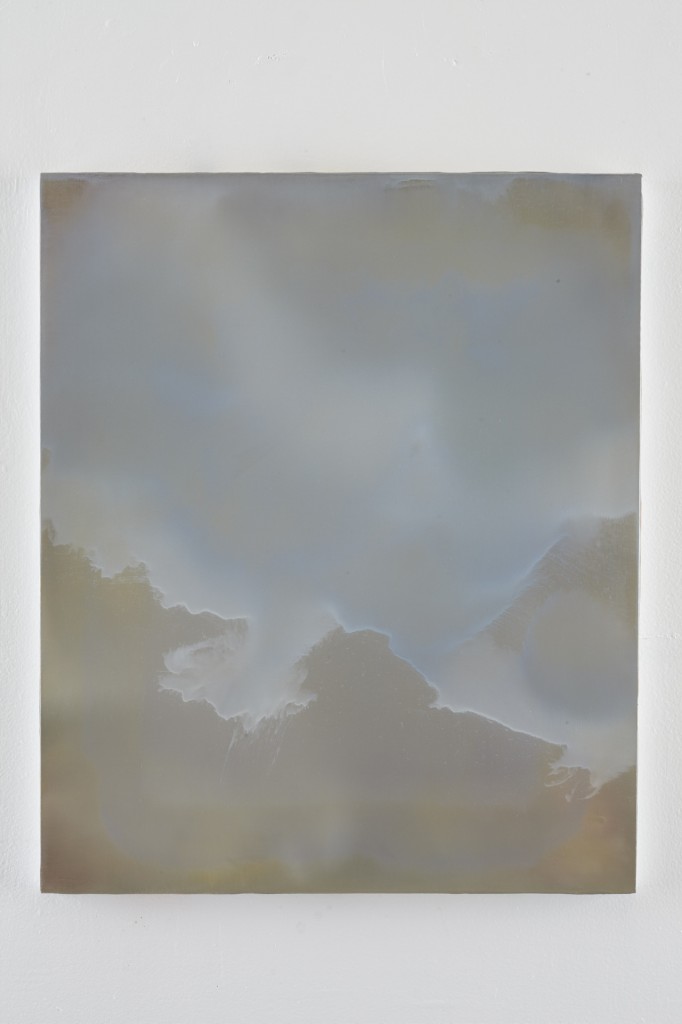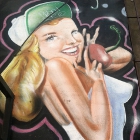Patrick Berran: Disrupting the Routine
(Patrick Berran is an impassioned emerging artist based in Bushwick, Brooklyn. Recently, Bushwick writer Delphine Amato talked with Berran about his influences and process. His art will be part of a two-person show opening at Storefront Bushwick in May. This Q&A first appeared on Amato’s blog And Freedom For.)
Were you raised in a creative environment?
Patrick Berran: The need to be creative and weird was a product of living in suburban Northern Virginia. I had a lot of support from many outlets during my childhood. I grew up in Woodbridge, 30 minutes from Washington, D.C. I spent many hours skateboarding, going to punk shows and art museums in D.C. D.C. really provided the thirst for things I wanted to see and experience. My parents were very encouraging at an early age. I attended the Dassel Art Academy from the age of 8 through 18. In 1987, at the age of 7 my life revolved around skateboarding, making art, soccer and an early punk rock influence encouraged from my older siblings. All of these activities are still a big part of my life today. Moving to Richmond to attend Virginia Commonwealth University — another amazing supportive environment.
How did you come to painting? Was this a life-long dream?
Berran: I always made drawings and watercolors growing up. My parents saw the interest and encouraged me to take classes with a woman named Susanne Dassel. She ran an academy from her home called the Dassel Art Academy. An amazing woman. Both her parents were artists. Her family fled Berlin during [World War II] and relocated to Canada. She went to [Rhode Island School of Design] and somehow ended up in Virginia. The classes would be once a week and have eight students at a time — all of us working on different projects. We would draw still lifes, make reproductions of images from books, photographs we brought in — anything really. She would encourage the building of whatever skill you seemed to have. I always liked and made watercolors the most — animals and flowers! Susanne was and still is an enormous influence. I visit her whenever I am passing through and we talk about art and life. Artmaking was very much a lifelong pursuit and having the support throughout my childhood and today has been key in that.
You’ve said that portraiture is a big influence. Can you explain that?
Berran: I look at a lot of landscape and representational painting; Édouard Vuillard, Caspar David Friedrich, Albert Pinkham Ryder are favorites. Several years ago, a Rembrandt portrait, to my surprise, began to inform the way in which I wanted to articulate space. I remember staring at the meeting points of the shoulder, the hair, the hat and the background. All of them being variations of black. It had this ridge of space that was so abstract yet so specific. I regarded it as slipping — how you can articulate or make believable this fine line between what is implied and real? It was wild. I began looking more and more at portraits than abstraction — how can you weight an image to feel realized and in place?
You do quite a lot of work in sketchbooks. Can you tell me about that process? How does a piece make it from sketchbook to finished painting?
Berran: The sketchbooks are new to me. I began working in them within the last year and I find them very exciting. I always make works on paper; it is very much a practice — similar to when I am painting. I wanted something to break that routine. So the sketchbooks are an exercise to free up the practice and make work in a different manner — to be busy more often. I have been working in them while travelling and [in] plein air, which has been very different to me. They are about mark making, to have many approaches — quick execution, space, texture. It’s a way to free myself up and just make, make make. You know, to decide later, but that “later” doesn’t matter — what is important is making these little paintings in this sketchbook right now at that moment. The great part is how much they stain and transfer onto other pages. I try not to have too much attachment to them. Some I really like and tend to stop, but others get blotted out as I work on the next several pages and get lost as I continue. All of the works on paper inform the paintings – whether its viewed as a lost layer, a drawing to base the initial start of a painting – but these little books really free up my touch and sensibility of space.
I like this a lot. Someone once told me that when you get an idea you have to act on it immediately. I think this thought is somewhat related — you have to keep the flow moving. Getting stuck on a particular work can lead to “execution” instead of “creativity.” Does that sound along the lines of your thought?
Berran: Yes, I think you are absolutely right, and I feel the idea of acting on something quickly is about a reaction to one’s routine. I like the notion of keeping and disrupting one’s routine, and ultimately to create as often as possible. When I feel that I am creating stuff on a bunch of different levels, I feel strongly connected to the work in a unique way.
Your color choices are sublime. They’re aesthetically pleasing – pretty, even – but also moody, layered and stirring. Can you talk a little about how you choose colors?
Berran: I prefer them to feel natural, man-made and of the natural world. Everyone has their games. I have always used color in ways that I may not like at first, using colors against what my instincts would dictate. For instance, I could never create orange paintings — now I am absolutely obsessed with the color. There are different bodies of work growing with respect to color. In some paintings I want color to repel the viewer at first and slowly open up the space. Some are downright open, showing the earliest gesso layers and thin washes of color. In all of it, color in relation to the process shows time — and in that time you could say stirring.
Can you talk a bit about your recent residency?
Berran: I just completed a three week residency at the Virginia Center for the Creative Arts in the Blue Ridge Mountains. This being my second completed residency, it was a fantastic experience. The quality of time and space achieved in these situations is truly unparalleled. I highly recommend people apply to the VCCA. I came away with over 30 completed paintings and a bunch of drawings.
What’s the next step for you?
Berran: Curating. I recently put together a show at SouthFirst Gallery in Williamsburg. It runs til the end of February. I am really excited and proud of how it turned out. The artists involved are great and the work looks fantastic together. They really gel. I also have something planned for March at Jamison Brosseau’s space in Bushwick — a group show of eight or so people. I also have a two person show at StoreFront in May. I am really excited to have the opportunity to show there. It will be myself and a sculptor named Jack Henry.
Categories
Archives

